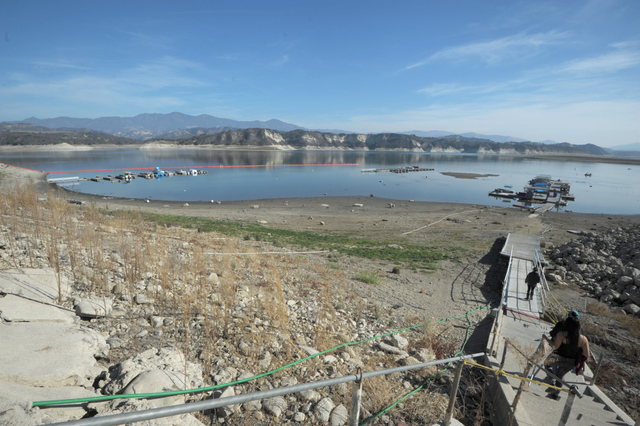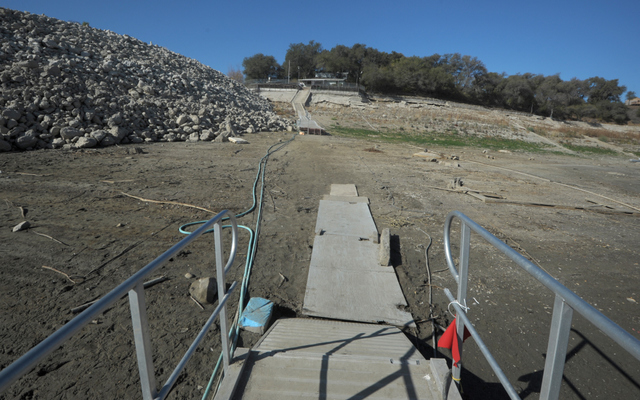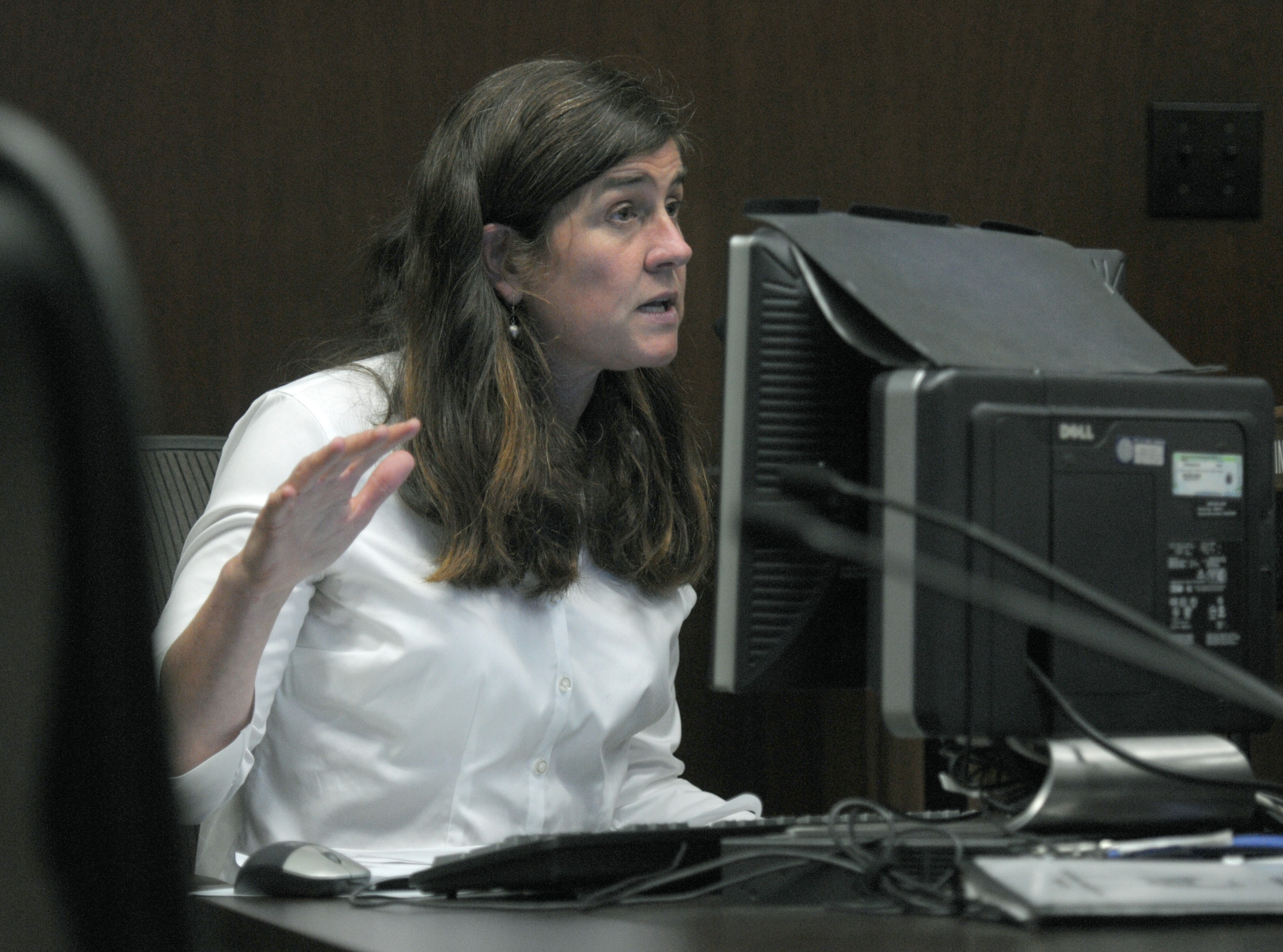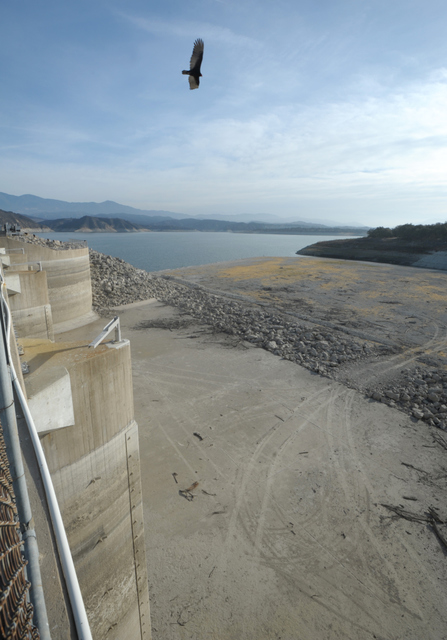D Is for Drought
Are Santa Barbara's Reservoirs More than Half Empty or Less than Half Full?

Although the Santa Barbara city water managers say there’s enough water on hand to meet normal demand in the coming year, they’ve girded their loins to officially declare a Stage I drought come March 14 barring the intervening onset of significant rainfall. A Stage I declaration marks the beginning of a intricately calibrated sequence of responses to a growing water shortage, entailing a heightened public awareness campaign coupled with voluntary conservation measures. Should that not suffice — and no significant rains fall — more restrictive measures will be progressively adopted in six-month increments.
New acting water director Joshua Haggmark told city councilmembers Tuesday that he’s shied away from casual use of the D-word in years past because Santa Barbara, set in a semi-arid environment, has a natural cycle of rainfall variation. But as the city — and the rest of the state — enters the third year of well-below average rainfall, he and the rest of his staff are ready to change their tune. And for obvious reason. Rainfall in the Santa Ynez Mountains this year is 53 percent below average. In the city, it’s off by 65 percent. Lake Cachuma — which normally provides 56 percent of the city’s annual water demand of 14,300 acre feet — is only 42 percent full. (If it dips down to 30 percent, the reservoir’s water level will fall below the intake pipes that move water from Cachuma to the water agencies serving the South Coast. At that point, special pumping will need to take place to get Cachuma’s water into its distribution pipes.) Lake Gibraltar — which on paper provides about one-quarter of the city’s water supply — is all but empty, silted up from recent forest fires and effectively out of commission. With the snowpack in the Sierra mountains only 20 percent of what it normally is, managers of California’s State Water system have announced they can guarantee delivery of only 5 percent of the allocations to which water-subscribing agencies are entitled. That’s only the second time in the system’s 50-year history it’s been so low.

Since 2011, city water planners have adopted a six-year water management plan in which the drought clock begins ticking each time Lake Cachuma spills. The South Coast is now entering the third year of subpar rainfall since Cachuma last spilled. According to the city’s plan, cutback actions are slated to commence in the fourth year. Despite this schedule, city water managers have already decided to take only 80 percent of their entitlements from Lake Cachuma this year so that the remainder will be on hand in coming years should the drought persist. By custom, all the water agencies dipping their straw into Lake Cachuma have agreed to do the same once the lake dips below the 100,000 acre-feet storage threshold. At 92,000 acre-feet, Cachuma is well below that. But that arrangement, said city public works czar Rebecca Bjork — and former water agency director — was just a “handshake agreement,” and one that other water agencies are choosing not to honor. “Let’s just say no consensus could be reached,” she said by way of oblique explanation. (She declined to comment on other news reports that the Goleta Water District, in particular, declined to cut back, arguing that its customers had already tightened their belts considerably and that further reductions would impose hardships on its customers both undue and unfair.) Bjork added that the water Santa Barbara doesn’t use this year cannot be used by other water agencies. “It’s been allocated, so other people can’t use it.”

Bjork, who just celebrated her 25th year with City Hall, has adopted a posture of calm but vigilant concern. “Am I nervous?” she asked. “As a water manager, I have to be nervous.” But Bjork is confident that the city’s six-year response plan will leave Santa Barbara water customers on solid ground. By contrast, Councilmember Bendy White expressed an abiding sense of urgency that City Hall needs to act swiftly and aggressively to secure existing and additional water supplies now. White’s response is colored not just by his conviction that climate change is real but also that Santa Barbara’s natural rainfall variation cycles might be “accelerated.” Back when the last major drought hit the South Coast — in the late 1980s — White was the chair of the city’s Water Commission and helped fashion the painful price structures that persuaded city water customers to cut their use fully by half — from 16,000 acre-feet a year to about 8,000. During that drought, Santa Barbara became famous for its water cops and residents who spray-painted their lawns green. The mayor talked openly about taking only sink baths, and “If it’s yellow, let it mellow” became the collective mantra when it came to flushing toilets. The new high water prices inflicted serious economic anguish, and White and the rest of the water commissioners held additional meetings to allow angry customers to pack commission hearings to speak their minds. On Tuesday, White referred to those traumatic days, saying, “I rode that razor blade down in the 1990s.” Of the present, he said, “I’m having the hair-on-the-back-of-my-neck sense that something’s not right.”
While White did not dispute any of the information presented by city water managers, he was far less sanguine than they about the certainty of future supplies. For example, he speculated that the city’s allotment from Lake Cachuma — now 8,300 acre-feet — could be cut by as much as 30 percent to meet federal habitat restoration requirements to bring the steelhead trout on the Santa Ynez River back from the brink of extinction. Bjork cautioned that there’s no way to know how much water the city could lose as a result of steelhead preservation efforts and that any final decision remains a long way off.
Mayor Helene Schneider wondered why the silt wasn’t removed from Lake Gibraltar, allowing that reservoir — located upstream on the Santa Ynez from Cachuma — to become a meaningful supply once again. Such an undertaking, she was told, would be environmentally challenging and prohibitively expensive, though no specific dollar amounts were available. She also wondered why the city’s reclaimed water system — which has irrigated parks and fields with less than potable water — would be out of commission for the next two years. That system has never worked well, she was told, and is in the process of being rebuilt. When it’s complete, its capacity to deliver 800 acre-feet of water a year will be expanded to 1,300.
Councilmember Gregg Hart questioned whether the city’s projections for continued receipt of State Water for years four, five, and six of a projected drought might be too optimistic. Haggmark explained all the ways the infrastructure of pipes provided by that system might allow the City of Santa Barbara to park its water in Carpinteria’s or Santa Maria’s much bigger underground aquifers. Currently, Santa Barbara has 4,200 acre-feet of State Water from previous years stored in two other reservoirs throughout the state. But Haggmark also conceded, “It’s a plausible outcome that State Water is crushed as well.”

The city’s ultimate ace in the hole — however theoretical — has always been its ability to rebuild the desalination plant it constructed back in 1991. While that plant had an ultimate capacity of 10,000 acre-feet a year, it was permitted for 3,100. Because the water produced by desalination is so vastly more expensive than other water supplies because of its intense energy requirements, the plant was taken off-line shortly after it was erected and has been mothballed ever since. To take it out of storage would cost at least $18 million. But Hart questioned whether the city permits — assiduously kept alive since then — could pass muster with the California Coastal Commission anymore. He noted that the commission, which would have ultimate permitting authority, had taken a dim view of desalination technologies. Instead, the commission has insisted that additional steps be taken to protect sea life and maintain existing aquatic water temperatures. City water planners were uncertain whether the existing desal permits would suffice and had not explored any changes to the plant’s basic design.
Councilmember Randy Rowse cautioned that when water prices go up high enough, consumption can go down so far that water sales no longer cover the cost of running the operation. He asked if city water planners had determined what that tipping point is. He was told they hadn’t, but that they were mindful of that possibility. When he asked whether the city’s water demand projections included all the new hotel rooms slated to come online, the answer was similarly fuzzy.

Councilmember Frank Hotchkiss wondered how “drastic” the impacts of new state plumbing codes that place a premium on water conservation would be. The average Santa Barbara water customer now uses 129 gallons a day, about half of which is used to irrigate outdoor plants. That’s higher than normal and reflects lower than average rainfalls. But state guidelines require that number be reduced to 117 gallons a day per capita by the year 2020. According to city water planners, the new plumbing requirements won’t have much of an impact on Santa Barbara because 90 percent of the city’s toilets have already been retrofitted or replaced by low-flow commodes. “The old pink toilet in the guest room will be gone,” Hotchkiss was told. “Oh no!” he exclaimed. Hotchkiss followed up with “Can the cherished pink toilet I love so much, can it be retrofitted?” He was told “no” in no uncertain terms.
Councilmember Cathy Murillo asked about the city’s recent decision to cease diverting some of the 1,100 acre-feet a year of groundwater that seeps into the 3.7-mile long Mission Tunnel that links the Gibraltar Reservoir to the city’s distribution system from Mission Creek. Those diversions, though small, she said helped maintain upstream habitat for federally endangered steelhead in dry summer months. She was told that the Mission Tunnel flows also contained carp and crawfish, nonnative species, that would feast on steelhead fry. Murillo took exception with that, stating that scenario has not been borne out by the facts and that the steelhead have been harmed by the cutoff. She vowed to pursue the matter at a later date, but agreed for the time being to merely disagree.
Councilmember Dale Francisco, paying comic tribute to councilmember Grant House, who was famous for always expressing his “appreciation,” said, “I would like to ‘appreciate’ the fine work staff has done” and moved to accept the report. (An emotional House stepped off the council earlier Tuesday during the council’s swearing-in ceremony after having expressed his appreciation and gratitude for working with such a “responsive” council and staff.) The vote was unanimous.


